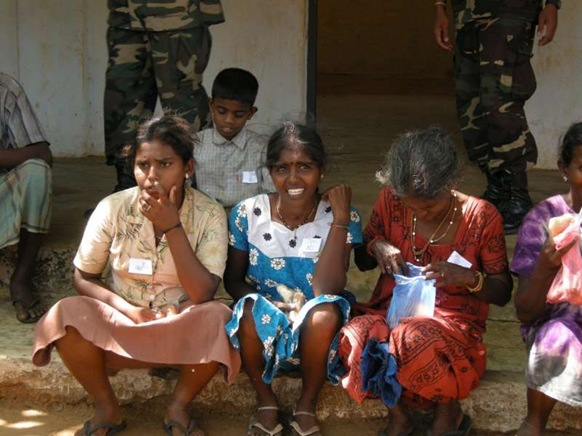 The UN refugee agency on Friday welcomed the Sri Lankan government’s long-awaited decision this week to allow increased freedom of movement for some 135,000 internally displaced people (IDPs) remaining in 20 closed camps in the north of the country.
The UN refugee agency on Friday welcomed the Sri Lankan government’s long-awaited decision this week to allow increased freedom of movement for some 135,000 internally displaced people (IDPs) remaining in 20 closed camps in the north of the country.
UNHCR field staff reported that more than 7,000 IDPs from the Menik Farm camps in Vavuniya and another 25 people from the camp in Trincomalee left their sites on the first day the new policy came into force.
"Our teams are in the process of assessing the number of IDPs exercising their new freedom of movement over the past few days and report that people continue to leave the camps," said a UNHCR spokesperson.
Generally, IDPs who wish to leave the camps are provided with a pass issued by the local authorities. These documents include details such as the district of origin, date of departure and date of return to the camp, temporary address for those who will remain away overnight and details of family members.
The pass will also represent a form of identification for those who do not yet have their national identity card. A similar system is in place for the IDP camp in Trincomalee and the four camps in Mannar. In Jaffna, the pass system is in the process of being implemented in the remaining closed sites.
According to UNHCR teams on the ground, many people left their belongings in the camps, which is an indication that they intend to return. Some of those interviewed told UNHCR they wanted to visit friends and relatives in other camps, in Vavuniya town, and the centres where those with suspected links with the Liberation Tigers of Tamil Eelam, or LTTE, are being held.
While authorities say that there is no time limit to the freedom of movement, there were reports that IDPs would only be allowed to stay away from the camps for up to 10 days. Many are also scheduled to return to their areas of origin in the coming days and weeks under the government-organized return plan.
"Our teams also report that, in general, people are happy to go back to their areas of origin where more basic services, such as health clinics and schools, are reopening," said the UNHCR spokesperson. "We hope as this new freedom of movement continues and the IDPs are fully informed of the process, inconsistencies across the different camps and districts and bureaucratic obstacles will be ironed out so that all IDPs will be able to exercise their right to full freedom of movement."
UNHCR hopes that mine clearance efforts keep pace with the rapid rate of returns and that IDPs are only returned to areas cleared of ordnance or where suspected areas are clearly demarcated. In addition, more efforts are needed in improving infrastructure as well as in development of livelihood support for the returnees. UNHCR is supporting the return process through the provision of a shelter grant and non-food relief items to all returning families.
At the end of the conflict between Sri Lankan armed forces and the LTTE last May, some 280,000 newly displaced people were staying in camps in Vavuniya, Mannar, Jaffna and Trincomalee. Since August, more than 150,000 IDPs from the former conflict zone – or more than 50 per cent of the post-conflict total of IDPs – have left the camps in Sri Lanka’s north and east, a majority of them as part of the Sri Lankan government’s return process.
By Sulakshini Perera in Colombo, Sri Lanka
(For updates you can share with your friends, follow TNN on Facebook and Twitter )
